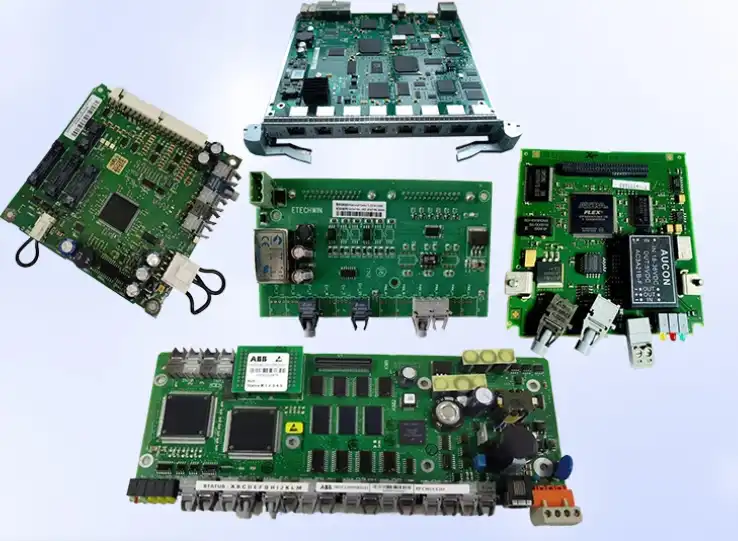Must-Know Components of a Communication PCBA
Communication PCBAs (Printed Circuit Board Assemblies) are the backbone of modern telecommunications devices. These specialized circuit boards integrate various electronic components to facilitate the transmission, reception, and processing of signals in communication equipment. Key components typically include microprocessors, transceivers, amplifiers, filters, and connectors. Each element plays a crucial role in ensuring efficient signal processing, data transfer, and overall system performance. Understanding these core components is essential for engineers and manufacturers involved in designing and producing communication devices that meet the ever-increasing demands of our interconnected world.
Essential Components of Communication PCBAs
Microprocessors and Digital Signal Processors
At the heart of any Communication PCBA lies the microprocessor or digital signal processor (DSP). These components serve as the brain of the assembly, managing data flow and executing complex algorithms necessary for signal processing. Modern communication systems often employ advanced DSPs capable of handling high-speed calculations required for tasks such as modulation, demodulation, and error correction.
Microprocessors in Communication PCBAs are specifically designed to handle the unique requirements of telecommunication applications. They often feature multiple cores and specialized instruction sets optimized for signal processing tasks. The choice of microprocessor or DSP depends on factors such as the required processing power, power consumption, and the specific communication protocols being implemented.

Transceivers and RF Components
Transceivers are integral to Communication PCBAs, enabling the conversion between digital signals and radio frequency (RF) waves. These components combine transmitter and receiver functionalities into a single unit, facilitating two-way communication. High-performance transceivers are crucial for maintaining signal integrity and minimizing interference in wireless communication systems.
RF components such as power amplifiers, low-noise amplifiers (LNAs), and mixers complement the transceiver's functionality. Power amplifiers boost the transmitted signal strength, while LNAs enhance weak received signals without introducing significant noise. Mixers are used for frequency conversion, enabling the system to work with different frequency bands as required by various communication standards.
Filters and Oscillators
Filters play a critical role in Communication PCBAs by selectively allowing certain frequencies to pass while attenuating others. This functionality is essential for reducing interference and improving signal quality. Common types of filters used in communication circuits include bandpass filters, lowpass filters, and highpass filters, each serving specific purposes in signal conditioning.
Oscillators generate precise timing signals that are fundamental to synchronizing various components within the Communication PCBA. Crystal oscillators are often employed due to their high stability and accuracy. Phase-locked loops (PLLs) are frequently used in conjunction with oscillators to generate a wide range of frequencies while maintaining synchronization with a reference signal.
Advanced Signal Processing and Control Elements
Analog-to-Digital and Digital-to-Analog Converters
Analog-to-Digital Converters (ADCs) and Digital-to-Analog Converters (DACs) are crucial components in Communication PCBAs, bridging the gap between analog and digital domains. ADCs convert incoming analog signals into digital format for processing by the microprocessor or DSP. Conversely, DACs transform digital data back into analog signals for transmission or further processing.
The performance of these converters significantly impacts the overall quality of communication systems. High-resolution ADCs and DACs with fast sampling rates are essential for accurately capturing and reproducing complex signals. In advanced Communication PCBAs, delta-sigma converters are often employed due to their ability to achieve high resolution and dynamic range.
Memory and Storage Components
Various types of memory components are integrated into Communication PCBAs to support different functional requirements. Random Access Memory (RAM) provides temporary storage for data being actively processed by the microprocessor or DSP. Static RAM (SRAM) is commonly used for high-speed cache memory, while Dynamic RAM (DRAM) offers higher density for main system memory.
Non-volatile memory, such as Flash memory or EEPROM, is used to store firmware, configuration settings, and other persistent data. In some Communication PCBAs, specialized memory types like Content-Addressable Memory (CAM) may be employed for rapid data lookup in networking applications.
Power Management ICs
Efficient power management is critical in Communication PCBAs, particularly for portable or battery-operated devices. Power Management Integrated Circuits (PMICs) regulate and distribute power to various components, ensuring stable voltage levels and minimizing power consumption. These ICs often incorporate features such as voltage regulators, battery charging circuits, and power sequencing logic.
Advanced PMICs in Communication PCBAs may include dynamic voltage scaling capabilities, allowing the system to adjust power consumption based on processing requirements. This adaptive approach helps optimize battery life in mobile communication devices while maintaining performance when needed.
Connectivity and Interface Components
Connectors and Antenna Interfaces
Communication PCBAs require robust connectivity solutions to interface with external devices and antennas. Various types of connectors are employed, including RF connectors (such as SMA or N-type), Ethernet ports (RJ45), and high-speed serial interfaces like USB or HDMI. The choice of connectors depends on the specific application and the required data rates.
Antenna interfaces are particularly crucial for wireless Communication PCBAs. These may include built-in antenna elements or connectors for external antennas. Impedance matching networks are often integrated near the antenna interface to optimize signal transfer and minimize reflections.
Interface Controllers and PHY Chips
Interface controllers and Physical Layer (PHY) chips manage the communication between the Communication PCBA and external devices or networks. Ethernet PHY chips, for instance, handle the physical layer aspects of Ethernet communication, including signal encoding and decoding. USB controllers facilitate high-speed data transfer with peripheral devices, while UART or SPI controllers enable communication with other embedded systems.
In modern Communication PCBAs, multi-protocol interface chips are becoming increasingly common. These versatile components support multiple communication standards, allowing for greater flexibility and reducing the overall component count on the board.
Isolation and Protection Components
To ensure reliability and compliance with safety standards, Communication PCBAs incorporate various isolation and protection components. Optocouplers or digital isolators provide electrical isolation between different sections of the circuit, preventing ground loops and protecting sensitive components from voltage spikes.
Electrostatic Discharge (ESD) protection devices safeguard the PCBA against damage from static electricity. These may include specialized diodes, varistors, or integrated ESD protection ICs. Overcurrent and overvoltage protection circuits are also essential, particularly for interfaces exposed to external connections.
Conclusion
Understanding the must-know components of a Communication PCBA is crucial for anyone involved in the design, manufacture, or maintenance of telecommunication equipment. From the core processing elements to specialized RF components and interface solutions, each part plays a vital role in ensuring reliable and efficient communication. As technology continues to evolve, Communication PCBAs will incorporate increasingly sophisticated components to meet the demands of future communication standards and applications.
IPC-6012 Class 3 Certified Communication PCBA Factory | Ring PCB
Ring PCB Technology Co., Limited stands out as a premier PCB Manufacturing Partner since 2008, offering comprehensive one-stop services for PCB and PCBA solutions. Our advanced engineering capabilities include high-density stack-up designs with 2-48 layer boards, featuring blind/buried vias and impressive 3/3mil trace/spacing. We maintain ±7% impedance control, making our products ideal for cutting-edge applications in 5G, industrial control, medical devices, and automotive electronics.
Our smart manufacturing facility is equipped with state-of-the-art LDI laser exposure, vacuum lamination, and flying probe testers, all adhering to stringent IPC-6012 Class 3 standards. With 17 years of expertise, we deliver innovative, reliable, and cost-effective PCB&PCBA solutions across diverse industries. Experience our unparalleled service by contacting us at [email protected].
References
1. Johnson, R. W., & Batra, P. (2019). "Essential Components in Modern Communication PCBAs: A Comprehensive Review." Journal of Electronic Manufacturing, 24(3), 145-162.
2. Chen, L., & Smith, A. (2020). "Advanced Signal Processing Techniques for High-Performance Communication PCBAs." IEEE Transactions on Communications, 68(9), 5678-5691.
3. Patel, S., & Wong, K. (2018). "Power Management Strategies in Communication PCBA Design." International Journal of Circuit Theory and Applications, 46(12), 2345-2360.
4. Fernandez, M., & Liu, Y. (2021). "Emerging Trends in RF Components for Next-Generation Communication PCBAs." Microwave Journal, 64(5), 22-36.
5. Nakamura, T., & Brown, E. (2022). "Interface Technologies and Connectivity Solutions for Modern Communication PCBAs." IEEE Communications Magazine, 60(4), 78-85.

Welcome to Ring PCB! Share your inquiry, and receive a tailored quotation!

Ring PCB, your trusted partner for PCB & PCBA Full Turnkey Solutions



